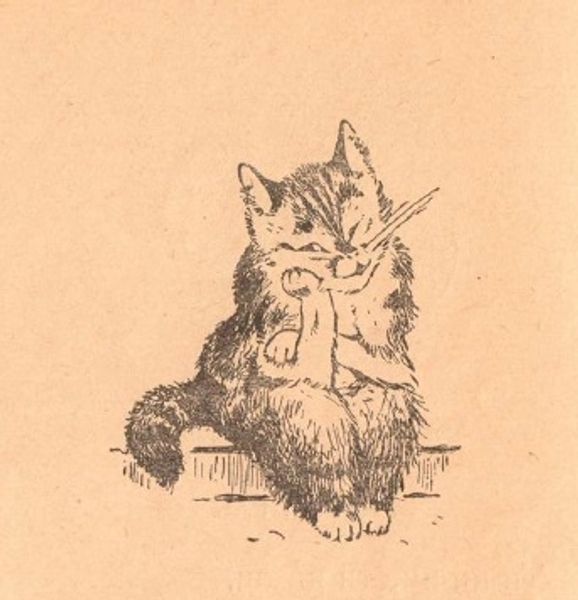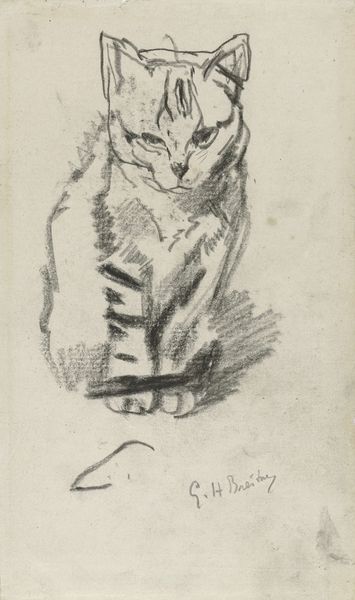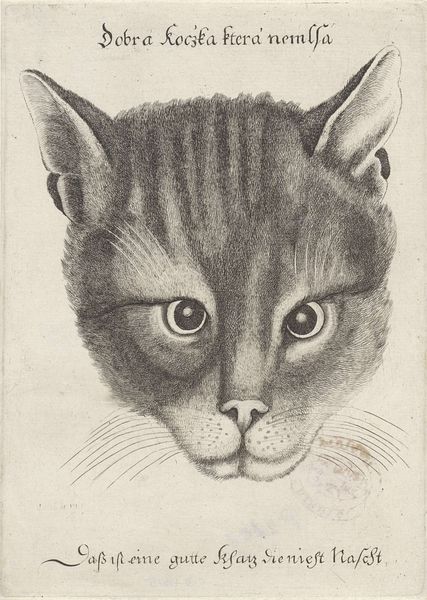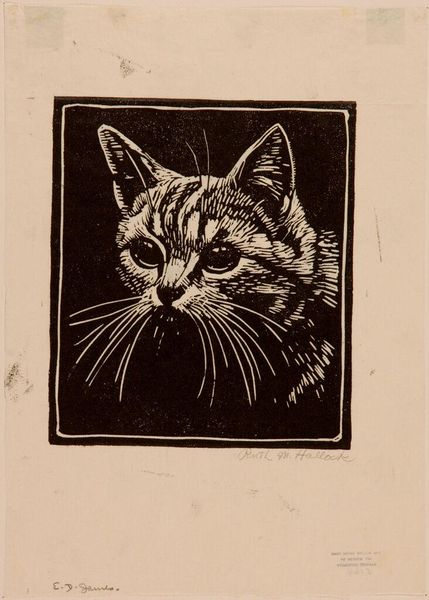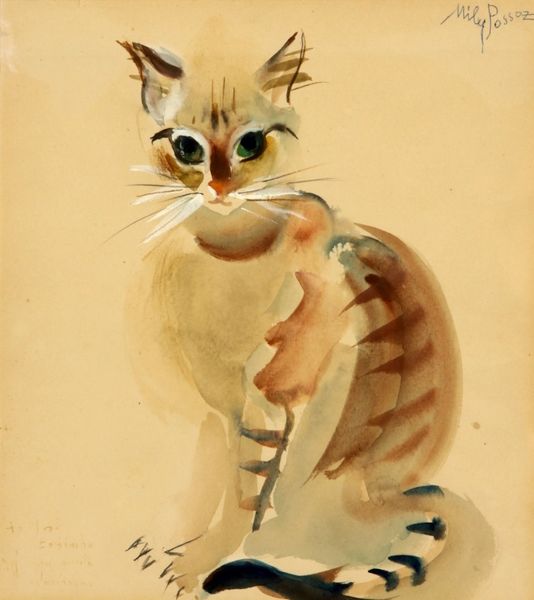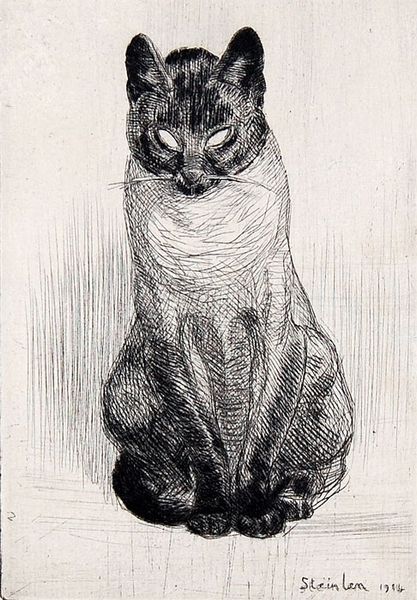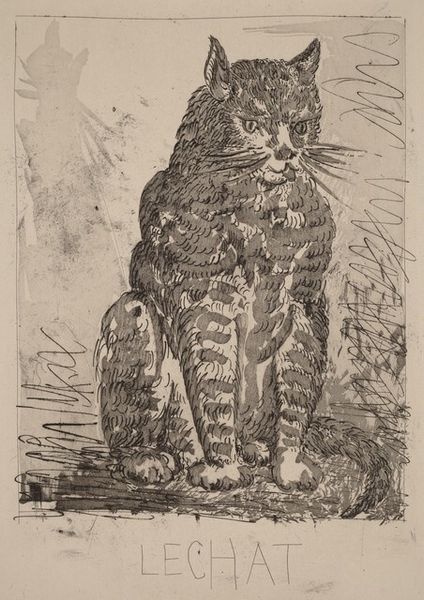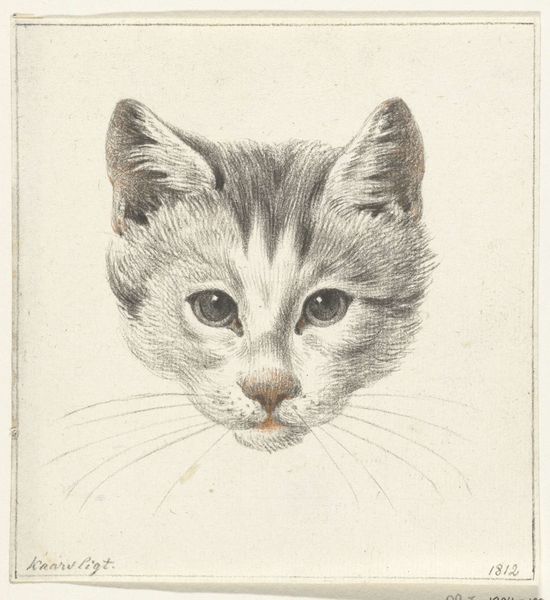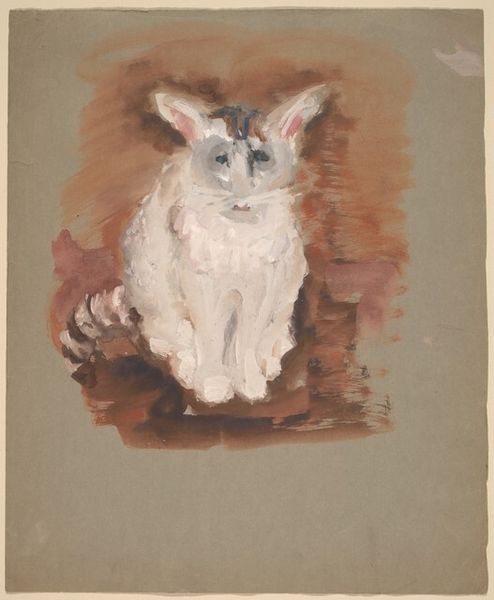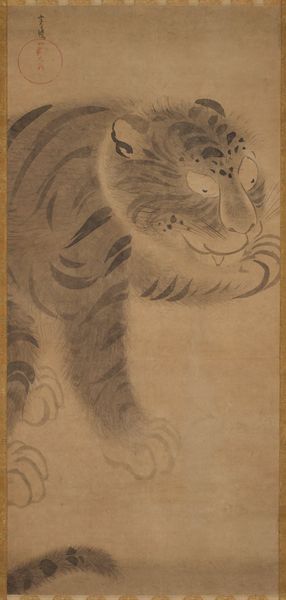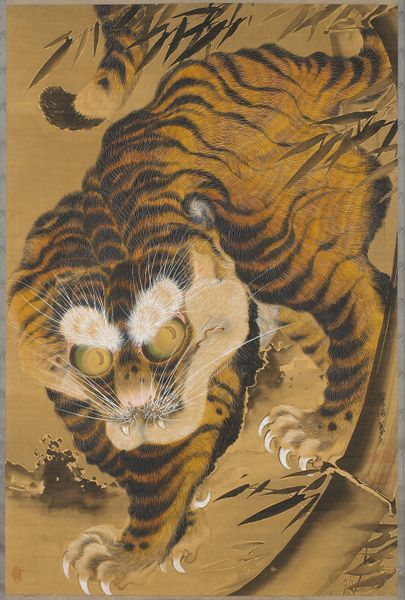
drawing, paper, ink-on-paper, hanging-scroll, ink
#
drawing
#
asian-art
#
japan
#
figuration
#
paper
#
ink-on-paper
#
hanging-scroll
#
ink
#
orientalism
Dimensions: 48 × 12 1/2 in. (121.92 × 31.75 cm) (image)79 × 16 in. (200.66 × 40.64 cm) (mount, without roller)
Copyright: Public Domain
Tsubaki Chinzan created this ink-on-paper sketch of a tiger in 19th century Japan. Here, the artist uses monochrome ink to capture the essence of the animal, rather than providing a realistic depiction. Tigers in Japanese art were often symbols of power and courage, reflecting the values prized in feudal society. This sketch was created during the Edo period when Japan was under the rule of the Tokugawa Shogunate, a time of relative peace and isolation. Artists like Chinzan often looked to Chinese artistic traditions for inspiration. Tigers, not native to Japan, entered the visual repertoire through imported art and textiles. During this period, painting and calligraphy were important skills for the educated elite, and artists often worked within established schools or styles. Understanding art means studying its history, examining the cultural and institutional contexts that shaped its creation. By consulting historical records and studies of Edo-period Japanese society and art, we can gain deeper insights into the meanings and values embodied in this powerful sketch.
Comments
No comments
Be the first to comment and join the conversation on the ultimate creative platform.
